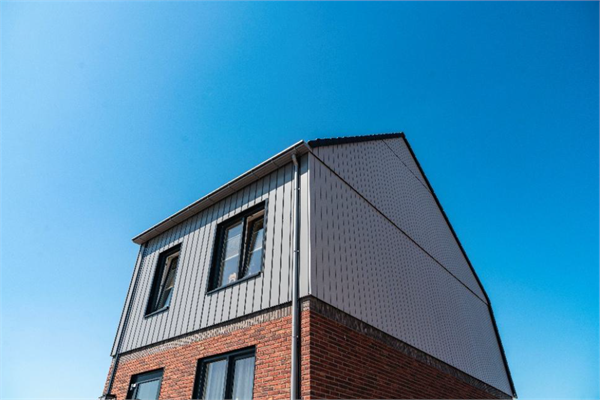
Calosol façades capture invisible sunlight to heat or cool buildings, reducing energy use by up to 30% and supporting sustainable renovations.
After developing a pioneering coating capable of helping buildings warm up or cool down, AkzoNobel
has now become the exclusive paint supplier for the Calosol heat-retaining façade technology it helped to create.
The innovative panel system – which can transform the façades of homes and buildings into a source of energy – was developed in collaboration with Dutch partners Emergo and TNO. Central to the technology is a special AkzoNobel coating that can harness energy from the portion of sunlight invisible to the human eye, meaning the system can capture solar energy throughout daylight hours, even in rainy conditions.
Suitable for both new-builds and renovation projects – and able to operate independently of the gas network – estimates suggest that using Calosol technology can reduce electricity needs by 20-30% compared with a traditional air-to-water heat pump. This opens up the potential for homes and buildings to become energy neutral, or even energy positive. The technology can also contribute towards green building certifications such as BREEAM and LEED.
“The built environment accounts for around 39% of global energy-related carbon emissions, so finding effective solutions to help reduce the environmental footprint of buildings is vital. Our Sikkens brand in the Netherlands already helps customers achieve BREEAM certification and this new façade technology is another innovative addition to what we currently offer,” has stated Wijnand Bruinsma, AkzoNobel’s Director of Sustainability.
By capturing the part of the solar spectrum that’s invisible to humans – which accounts for more than 50% of total solar energy – the aesthetically pleasing panels can be supplied to building designers in virtually any colour, thanks to AkzoNobel's Interpon and Fidura™ portfolios. Traditionally, black is most associated with absorbing light, but with Calosol technology, white can deliver more than 30% higher solar absorption.
“The technology we’ve developed with Emergo and TNO represents an important step in helping to make the built environment more sustainable, especially when you consider that 80% of today’s buildings will remain in use beyond 2050. So, addressing their carbon footprint isn't just an environmental concern, it’s a pressing economic and societal challenge,” has added Wijnand Bruinsma.
With around 60 billion square metres of unused façade surfaces in the European Union alone – and an equal amount of roof surface – the technology has enormous green building potential. Following successful testing in lengthy pilot projects with several Dutch housing associations, the new system is also featured on a sports hall in Almere.
“The Calosol heat-retaining façade technology is the perfect complement to our sustainable prefab roof and aesthetic façade solutions. It’s particularly effective for the renovation of residential homes and other structures such as public buildings that have important heating needs, including swimming pools. It provides added value to property owners, architects and housing corporations, expanding the possibilities for sustainable renovations,” has concluded Hendrik-Jan Weggeman, Director of Emergo.